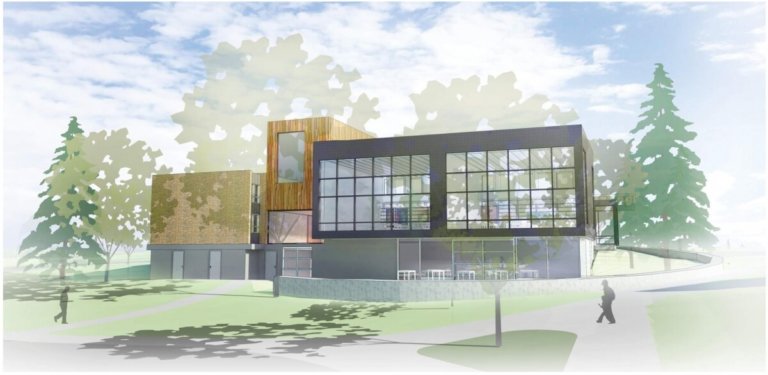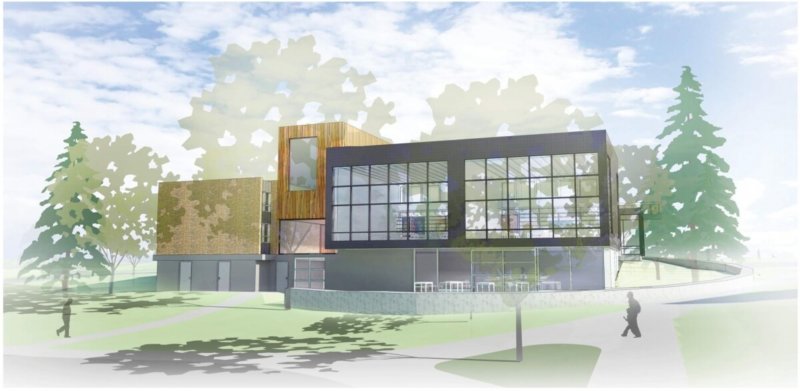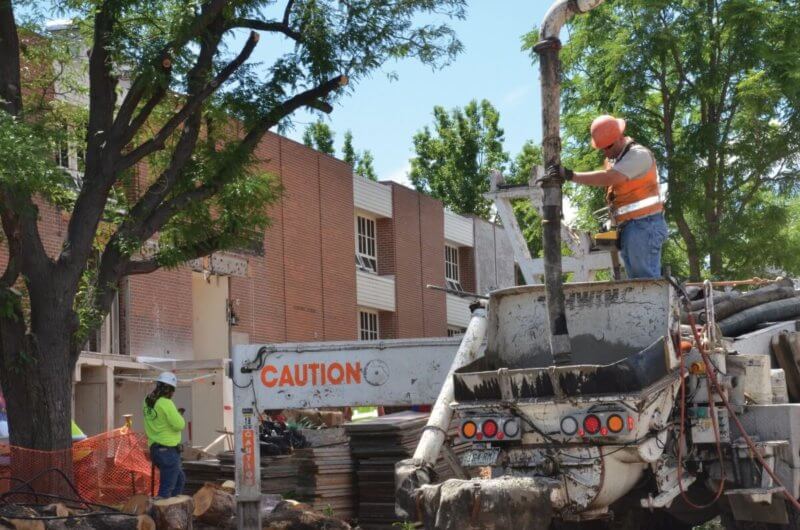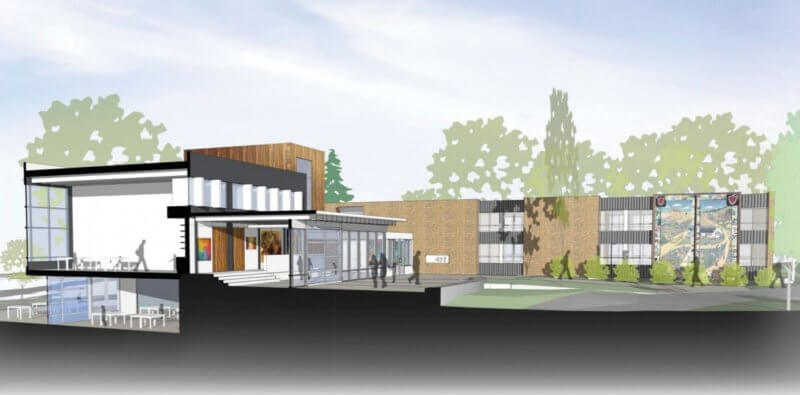“When I was in the tenth grade,” says Andy Rockmore, partner in the Denver architecture firm of SHEARS ADKINS ROCKMORE (SAR), “my mother took me to the architecture studio at Rensselaer, where I eventually went to college.”
“You know those commercials where the person’s head explodes?” he asks. “(Being in that space) was like that for me. I couldn’t believe that a space could be both so beautiful as well as so useful. It was meant to create.”
Combine those “wow” and “aha” moments and that’s Rockmore’s inspiration for his and SAR’s wholesale renovation of CA’s Visual Arts Building, previously known as the Stevens Art Building.
During the 1960s, Coloradan Bill Stevens, an independently wealthy rancher and state senator from Gypsum, both served as a CA trustee and funded the construction of the then-new, two-story dormitory for 56 boarding students – the building that, in time, became the Stevens Art Building. But what to do with it now so that it recaptures Rockmore’s moments?
“For starters,” says Rockmore, “I looked at the existing building. It’s extremely solidly built – a perfectly good building for all the things that would make an art building work – that construction, and lots of rooms and storage spaces and bathrooms. The building is like the collection of wooden easel boxes that an artist has.”
“It’s about the students’ experience, that is, to teach the whole child. All students can be connected by seeing and being engaged both inside and outside these buildings. It increases participation and interaction. You don’t have to be within the building to see the incredible things going on inside the building.”
“But,” he says, “it’s terrible as an art studio. There aren’t any thinking spaces, no ‘feeling’ spaces. The day lighting is poor and artificial. And the ceilings are eight feet tall, not meant to inspire expansive thinking.”
SAR’s analysis of the old Stevens Building also isolated other artistic or creative shortcomings: an underutilized dark room; a poorly-lit, smallish gallery; a kitchen great for 56 hungry dormies but a waste of artistic space; and, while there were enough bathrooms in the building as a whole, there were not enough per floor.
Rockmore’s and SAR’s goal, then, came down to “reclaiming the building rather than tearing it down and starting a new one,” he says. “We wanted to create new expanses for expansive thinking.”
Along with a clear intention to amp up studio space, Rockmore’s designs will quite transform the building into a richer forum for the CA campus.
A flexible gallery space — much larger than the existing gallery — will display, from Stamper Commons and the rest of campus, what’s happening inside Visual Arts.
A tiered, radially landscaped elliptical plaza will connect the upper and lower studios, not only creating new outdoor studio space, but also strengthening the art center’s presence on Stamper Commons.
Even a seniors-only “tree top” studio in an upper corner of the building will provide both individual work space and a place that younger students can view as an ideal which they can strive to join.
The greatest “newness” in the new building will be the freshness of its studios.
“We said, ‘Let’s build new studios,’” says Rockmore, “studios with exposed natural light, inside and out, so people can see into the rooms, just as the artists can see outside to the incredibly beautiful campus that CA is.”
The renovated Visual Arts Building will be flooded with what Rockmore calls “northern light, an even, consistent, natural, light.” Even the overhang on the south-facing, wall-to-ceiling glassed-in gallery will cause, Rockmore points out, “indirect, reflected light from the south.”
“Transparency is what drove functionality specifically,” he says. “That drove the design concept.”
“What drives us in campus planning, what drives us campus-wide,” says Rockmore (reminding that SAR is also in line for redesigns and renovations to both CA’s existing theater and gymnasium), “is that transparency.”
“It’s about the students’ experience, that is, to teach the whole child,” he says [Rockmore is also a CA parent]. “All students can be connected by seeing and being engaged both inside and outside these buildings. It increases participation and interaction.
“You don’t have to be within the building,” Rockmore says, “to see the incredible things going on inside the building.”
To learn more about the Visual Arts Center or to take a virtual tour, click here!




